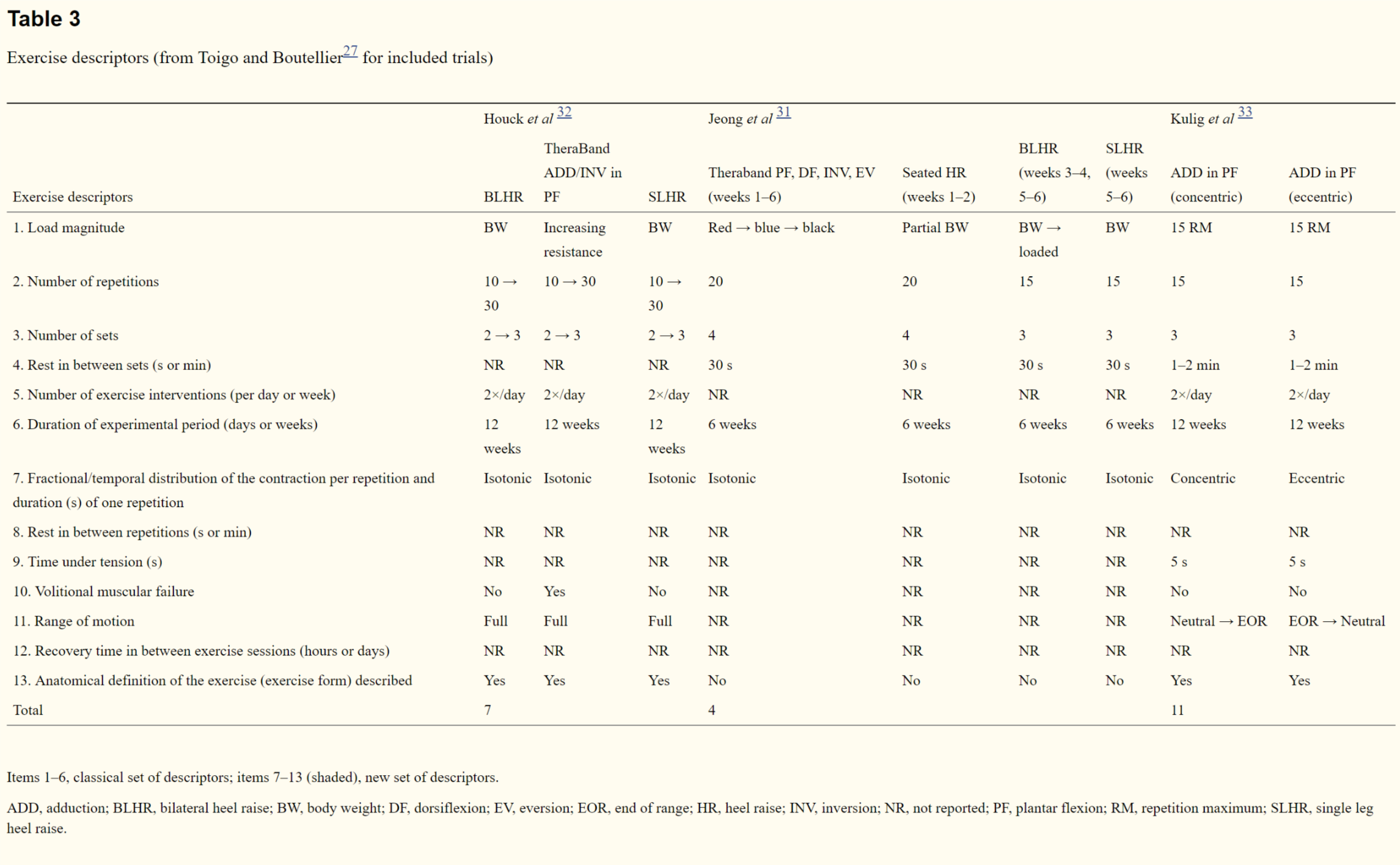This systematic review by Ross et al is the first to investigate the effectiveness of exercise in the management of posterior tibial tendon dysfunction (PTTD). As you see when you read the open access article, there were only 3 studies which were good enough to include in the review itself. Therefore the findings do need to be taken with a higher degree of scrutiny.
What is PTTD?
The posterior tibial tendon functions mainly as a dynamic support of the medial arch. It also inverts the foot and aids in ankle plantar flexion. Dysfunction of the posterior tibial tendon usually manifests early with pain and swelling along the medial aspect of the foot and behind the medial malleolus. The pain is worse with prolonged standing and activities, and usually is associated with tenderness along the length of the tendon. In advanced posterior tibial tendon dysfunction, collapse of the medial arch occurs, leading to the characteristic pes planus deformity with hindfoot valgus; initially, this deformity is flexible, but in more-advanced stages it can become fixed and associated with forefoot abduction.
PTTD is a progressive condition that can be classified into four stages. In the early stages there may be pain, the area may be red, warm and swollen. There are not usually symptoms during gait but symptoms may be present in running. Later as the arch begins to flatten, there may still be pain on the inside of the foot and ankle but at this point, the foot and toes begin to turn outward and the ankle rolls inward. As PTTD becomes more advanced, the arch flattens even more and the pain often shifts to the outside of the foot, below the ankle. The tendon has deteriorated considerably and arthritis often develops in the foot. In more severe cases, arthritis may also develop in the ankle.
What Does the Research Tell Us?
In a nutshell eccentric exercise are superior to concentric exercises for improving pain, disability and foot function. Unfortunately there isn’t enough evidence around to tell us the optimal dose, frequency or duration requited however clinicians should be guided by assessment to decide this and have a preference towards eccentric exercise.
The reason why eccentric exercises were found to be the superior exercise choice is the fact that they are more effective at loading tendons. Over on Physioplus we have an awesome course on tendinopathy which goes into detail and thoroughly explains why loading tendons is so important for their healing.
Below is a table from the systematic review which details which exercises have been shown to be most effective so far. Be mindful that the optimal programme has yet to been created and remember to use clinical reasoning to create an individualised programme for your patient.

Opportunities
There is little high quality research on the topic of PTTD and this presents a clear opportunity for investigation. If you are reading this and you are doing research on this topic or would like to discuss what you think about this systematic review then get in touch!